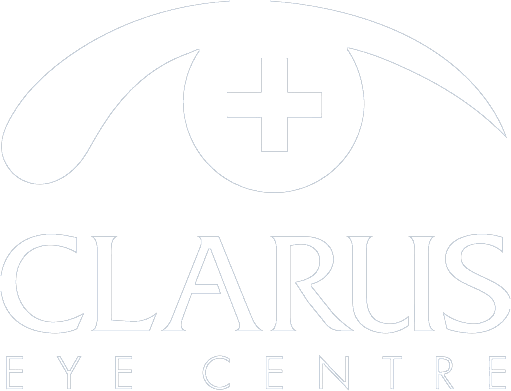What Tests Are Performed Before Cataract Surgery?
WHAT TESTS ARE PERFORMED BEFORE CATARACT SURGERY?
One of the most common questions asked by patients who have been diagnosed with cataracts is “what tests are done before cataract surgery?”
Before we review common cataract tests and their importance for your cataract surgery procedure, it is important to understand the following:
First, what is cataract surgery?
Cataract surgery is one of the safest and most effective types of surgery performed in the United States today. Greater than 98% of cataract surgery patients report better vision following surgery.
The primary goal of a cataract surgery procedure is to remove the cloudy lens from your eye and replace it with an artificial or intraocular lens (IOL). Cataract surgery can result in an enhanced visual outcome that reduces your dependence on glasses, sometimes eliminating the need for them entirely. It also addresses various refractive conditions impacted by cataracts such as, but not limited to, clarity, brightness, or glare. For reference, a refractive condition (also known as a refractive error) occurs when the shape of the eye, or changes within the eye, prevents light from focusing clearly on the retina.
There are several lens replacement options available with cataract surgery, depending on your needs. Your ophthalmologist will review how to choose the best lens for cataract surgery during your cataract surgery consultation.
When do you need cataract surgery?
Your natural lens is designed to bend (refract) light rays that come into the eye to help you see. Through aging or some medical conditions, the proteins of your natural lens can change, resulting in your vision becoming more and more cloudy over time. This clouding of the lens is a cataract. Having a cataract can be like looking through a foggy or dusty car windshield.
The only way to remove a cataract is with surgery. Your ophthalmologist will recommend removing a cataract, in most cases, when it keeps you from doing things you want or need to do. Less commonly, a cataract may need to be removed for medically urgent reasons. However, these urgent reasons are rare.
What is the procedure for cataract surgery?
Cataract surgery is typically an outpatient procedure that usually takes 10-15 minutes to perform. It is less common but depending on the severity of the condition, surgery could take longer.
First, your doctor will place eyedrops in your eye to dilate your pupil. You'll receive local anesthetics to numb the area, and you may be given a sedative to help you relax. If you're given a sedative, you may remain awake, but groggy, during surgery.
To replace your natural lens with your chosen intraocular lens, your cataract surgeon will utilize some of the most advanced technology available today, including, but not limited to:
- The Catalys® Laser system, which analyzes the internal structures of your eye and provides computer-guided laser precision for several key steps of cataract removal surgery. Under your surgeon’s guidance, the Catalys® laser performs these delicate maneuvers with real-time 3D imaging with incredible accuracy.
- The ORA System® Intraoperative Wavefront Aberrometer, which takes additional measurements of your eye during surgery to optimize your postoperative visual outcome.
Immediately following your surgery, you may be provided an eye shield to wear during the day and while sleeping. You may also be instructed to use postoperative drops for the rest of the day; if so, the surgery center will give you specific instructions regarding when to instill those medications. Your vision will be blurry for the first few days but should gradually improve as your eye heals.
What tests are performed before cataract surgery?
Common tests performed before cataract surgery include:
- A Full Ocular Examination: This is when your ophthalmologist evaluates the anatomy and overall health of the eye, which gives them a better picture of any existing conditions that may affect the outcome of cataract surgery. This includes using a special microscope known as a slit lamp to thoroughly evaluate the many intricate structures of the eye.
- Biometry Tests: This is an important test to determine the correct power of the artificial intraocular lens that will replace your natural lens.
- In this test, the length of the eyeball and the curvature of the cornea are measured. These measurements are known as keratometry readings.
- The biometry readings are different and unique for each patient. Once the reading is obtained, they are entered into a special formula to calculate the ideal power of the artificial lens to be used in your eye. The lens power can be further customized to attain various visual outcomes depending on each patient’s preferences.
- Corneal Topography: This test is performed to check corneal curvature in detail. Corneal topography can help in detecting irregularities in the cornea that could affect the outcome of cataract surgery.
- Optical Coherence Tomography: Optical coherence tomography or OCT is done to evaluate the details of the macula, which is the center portion of the retina. Problems with the macula can also affect the outcome of cataract surgery.
These tests help optimize the outcomes of cataract surgery. Based on your results, your ophthalmologist will decide the best surgical approach and whether additional testing is recommended.
At Clarus Eye Centre, our cataract surgeons have been trained at some of the most respected eye institutes in the country. Their expertise, experience, and compassion make them some of the most trusted and well-respected surgeons in the South Sound Region of Washington and beyond. When you choose Clarus, you are choosing excellence in cataract surgery. To learn more, visit our cataract surgery page here: https://www.claruseye.com/cataract-surgery/
…………………………………………………………………………………..
Additional Resources for Cataract Testing Information:
